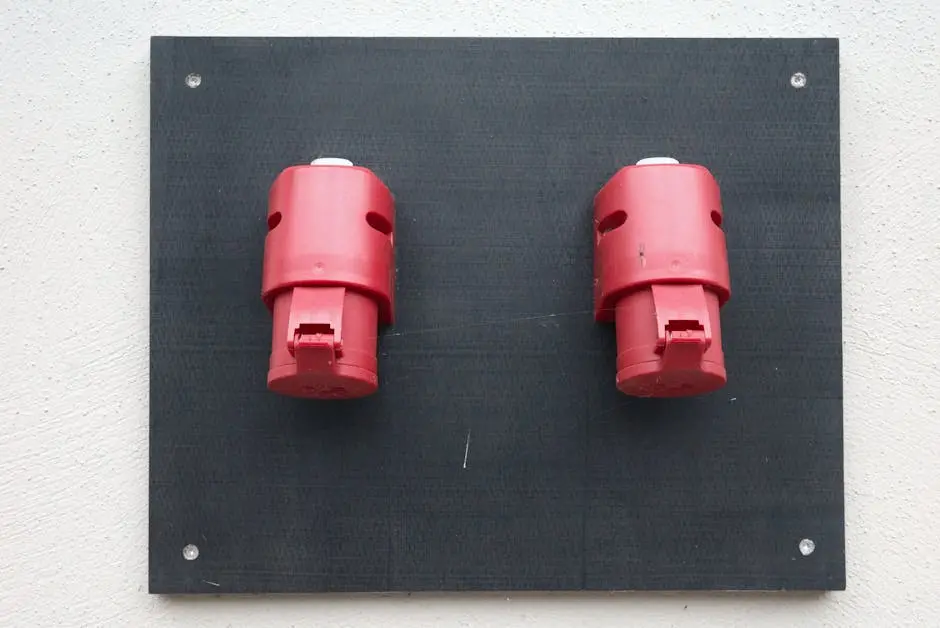
7 Essential Tips for Using Terminal Connectors Safely
Share
Using terminal connectors can significantly enhance the safety and efficiency of electrical systems, but it’s vital to handle them correctly. Whether you’re a novice or a seasoned electrician, a few essential tips can help you ensure that your work is safe and effective. Let’s dive into some simple and critical steps that will guide you in using terminal connectors with confidence.
1. Understanding Your Tools and Materials
Familiarize yourself with the different types of terminal connectors and the specific tools you need for installation. Understanding what you’re working with lays a solid foundation for safe handling and proper usage. A well-chosen toolset will not only make your task easier but also avert issues such as loose connections. Specific tools like crimpers and wire strippers are necessary for most jobs involving connectors. Knowing which connectors to use, like male bullet connectors versus female ones, is fundamental in ensuring a successful setup.
Recognizing the role of copper materials and electro-tin plating in components can help you decide on the best materials for your project. These offer enhanced conductivity and corrosion resistance, vital for ensuring durable and effective electrical connections.
2. Ensuring Proper Insulation
Proper insulation is vital in preventing short circuits and ensuring user safety. Vinyl insulation, commonly used in terminal connectors, provides an effective barrier against electrical shock. It’s important to remember that insulation not only enhances safety but also contributes to the device’s longevity by minimizing exposure to environmental elements. This makes vinyl-insulated crimp terminals an excellent choice for applications with minimal moisture exposure.
Vinyl-insulated terminals are particularly useful for managing wire contact, even in complex applications such as HVAC systems and home theater setups, where secure and insulated connections are critical for system performance and safety.
3. Selecting the Right Connector Size
Choosing the correct connector size is more than a mere preference; it’s a significant determinant of your project’s success. If the connector is too large, it won’t grip the wire firmly, leading to potential slippage and electrical hazards. Conversely, a connector that’s too small might damage the wire it’s supposed to protect. Referencing detailed product specifications, like wire ranges, ensures compatibility and effectiveness.
For example, the vinyl male bullet connector with a 16-14GA range is designed to fit a specific wire gauge, facilitating secure connections in automotive and industrial settings. This specificity ensures that the connectors can handle the electrical load without risk of overheating or failure.
4. Keeping Connections Tight and Secure
One of the biggest dangers in handling electrical connectors is ignoring the importance of secure connections. Loose terminal connectors present substantial risks — they can increase circuit resistance, generate unintended heat, and potentially spark a fire. Regularly inspecting and tightening connections can prevent these hazards, ensuring the longevity of the components and security of the premises.
Over-tightening, however, can also be detrimental, potentially breaking or deforming the connector. The aim is a balance — a firm but gentle tightness that maintains integrity and safety without causing damage or unnecessary strain to the terminal.
5. Regular Maintenance and Inspections
Regular maintenance isn’t just a recommended practice — it’s a critical part of ensuring the sustained efficiency and safety of your electrical systems. Scheduled checks help spot wear and tear or potential weaknesses that can escalate if left unaddressed. This proactive approach can save you from dealing with expensive repairs or dangerous situations down the line.
Implementing a maintenance routine involves periodically reviewing the condition of cables and terminals, as well as tightness and insulation of the connectors, ensuring everything stays in top working order. Partner this with periodic deep inspections from a professional for an extra layer of security.
6. Adhering to Safety Standards
Following established safety standards isn’t merely about compliance—it’s about ensuring the safety of everyone involved with the equipment. By adhering to standards, such as using terminal connectors made from materials with UL94 flammability ratings, you greatly reduce the risks associated with electrical work. These standards ensure that every connector functions as intended, minimizing the potential for accidents.
Education on the specific safety certifications and requirements relevant to your equipment is essential. This way, you not only ensure compliance but also solidify the reliability of your electrical installations.
7. Seeking Professional Assistance When Needed
When the complexity of electrical work surpasses your comfort level, professional assistance becomes invaluable. Electricians bring a wealth of knowledge and experience to troubleshoot issues you might not even be aware of, ensuring your safety and the effectiveness of your project. Whether it’s for regular system maintenance or a specific problem, expert help ensures your peace of mind.
Especially when dealing with larger electrical projects or systems with high voltage applications, it’s crucial to consult with professionals to avoid errors that could lead to significant damage or risk. The added assurance and safety provided by experts typically outweigh any cost considerations, making this an investment in safety and reliability.

